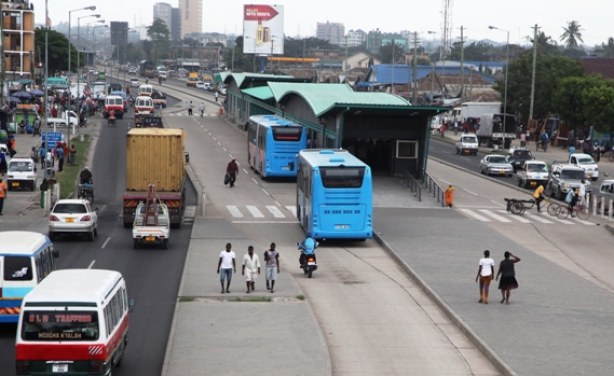
Isuzu East Africa has launched two types of high-capacity vehicles for the planned bus rapid transit system (BRT) in Nairobi.The two vehicles with a speed limit of 60 kilometres per hour can ferry between 62 and 100 passengers at a go.
Kenyans on twitter have reacted differently to the new BRT buses as they compare Tanzania’s BRT that have been operational for more than one year to the new Kenyan ones. Some can’t see the difference between the already existing buses and BRT interms of capacity
12:24 What is the difference between these buses and Paradiso in terms of capacity? I expected something close to those long City Shuttle buses. Or am I missing something? via @jacouf
— Ma3Route (@Ma3Route) October 16, 2018

Some are mad that the bus could have made in Kenya but instead were made in South Africa
12:23 @fndaga Damn thing says buy Kenya Build Kenya on a bus that was made in South Africa. Ironically the Tanzanian buses are more functional in their approach and were made in Kenya. via @shahparit
— Ma3Route (@Ma3Route) October 16, 2018
Ma3Route twitted that the Dar-Es-Salam BRT are incoarable to the Nairobi BRT
11:27 These 2 are incomparable. Dar BRT operational for more than 1 year now vs Nairobi’s proposed BRT. Why are we this comfortable with mediocrity? pic.twitter.com/UzupX9wNw1 via @fndaga
— Ma3Route (@Ma3Route) October 16, 2018
Others feel there is nothing unique about the BRT
14:26 @fndaga A 62seater bus cannot be I BRT, tuacheni hii mchezo bwana????
That Homeboyz bus that crashed recently was a 62 seater and we have 72 seaters also, we need something unique that can comfortably accommodate 100 plus passengers via @YuayaDominick
— Ma3Route (@Ma3Route) October 16, 2018

Bus Rapid Transit (BRT) is a high-quality bus-based transit system that delivers fast, comfortable, and cost-effective services at metro-level capacities. It does this through the provision of dedicated lanes, with bus ways and iconic stations typically aligned to the center of the road, off-board fare collection, and fast and frequent operations.
Because BRT contains features similar to a light rail or metro system, it is much more reliable, convenient and faster than regular bus services. With the right features, BRT is able to avoid the causes of delay that typically slow regular bus services, like being stuck in traffic and queuing to pay on board.
Speaking during a one-day meeting with city commuter operators on Monday, Isuzu EA managing director Rita Kavashe said the buses have space for sitting and standing passengers, noting they were locally developed with consultation on BRT standards.

“Kenya has the capacity to manufacture these buses for our cities and this should be encouraged since it will create jobs as well as enable operators easily access credit finance to fund acquisition of the buses,” she said.
The high capacity vehicles’ specifications have since been formulated and gazetted.
Matatu Owners Association chairman Simon Kimutai said ,“We support BRT as it includes all public service vehicles (PSVs) and must start off with segregating lanes for all PSV where private vehicle owners are barred. That will discourage private vehicle owners from using their costly vehicles leaving them at home in favor of the cheap BRT vehicles that we are ready to invest in,”
The implementation of the Bus Rapid Transport (BRT) in Nairobi commenced on Thursday with the innermost lanes along the Thika Superhighway demarcated red with the words “BRT ONLY” prominently marked on the road surface to send a signal to drivers to keep out.
The lane will be dedicated to facilitating easy movement of all high capacity PSV buses carrying over 80 passengers and aims at both decongesting the city and facilitating easier movement in the country’s economic hub.
Transport Cabinet Secretary (CS) James Macharia on Thursday inspected the roll-out phase of the BRT implementation.